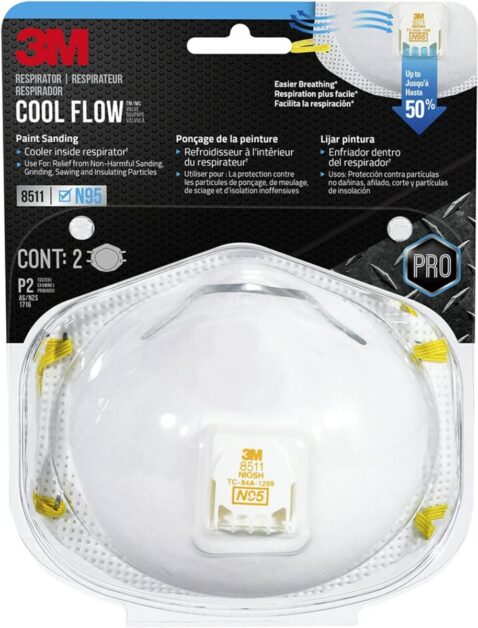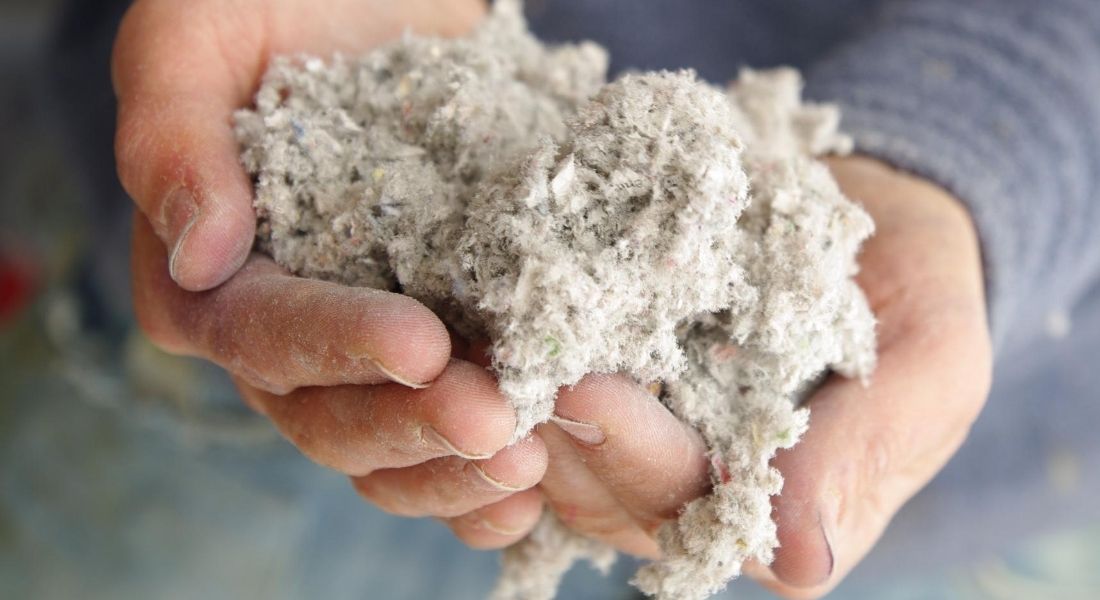Rockwool: Is It Harmful? Yes, But Here’s How to Use It Safely
Ever wondered about the safety of using Rockwool in your gardening ventures? You’re not alone. With its widespread popularity in hydroponics and horticulture, concerns about its potential harm have surfaced. But fear not! In this guide, we’ll delve into the facts surrounding Rockwool and how you can navigate its usage safely. From understanding its composition to implementing best practices, we’ve got you covered. So, if you’re ready to harness the benefits of Rockwool without compromising on safety, keep reading. Let’s debunk the myths and cultivate our knowledge together!
Table of Contents
Understanding Rockwool: An Overview of Its Composition and Uses
Rockwool, also known as stone wool or mineral wool, is a versatile material that is widely used in various industries, including construction, horticulture, and insulation. Composed of natural materials such as volcanic rock and minerals, Rockwool is manufactured using a process that involves melting and spinning the materials into fine fibers, which are then compressed and formed into different products.

- Unique Properties of Rockwool:
- Rockwool possesses unique properties that make it highly suitable for various applications.
- It is known for its excellent thermal insulation capabilities, contributing to energy-efficient buildings.
- Additionally, Rockwool is fire-resistant, providing added safety and protection in construction.
- Sound-Absorbing Qualities:
- The fibrous structure of Rockwool contributes to its sound-absorbing qualities, making it effective for noise control in buildings.
- Its non-combustible nature and resistance to mold and bacteria growth ensure a healthier indoor environment.
- Horticultural Applications:
- Rockwool is favored in horticulture for promoting healthy plant growth.
- It has excellent water retention capabilities, facilitating efficient root development and nutrient absorption.
- The medium provides good aeration and drainage, reducing the risk of root rot and supporting the growth of beneficial microorganisms.
- Versatility Across Industries:
- The versatility of Rockwool extends beyond construction to various industries.
- Whether used for insulation, soundproofing, or horticulture, Rockwool offers durable and sustainable solutions.
- Its properties contribute to energy efficiency, safety, and optimal plant growth in hydroponics systems and traditional gardening practices.
- Considerations and Safety Guidelines:
- Despite its benefits, it’s essential to consider potential health concerns associated with Rockwool.
- Proper handling guidelines should be followed to ensure the safety of individuals working with Rockwool.
Incorporating Rockwool Cubes into my hydroponic gardening regimen has revolutionized the way I nurture and cultivate my plants. These cubes provide unparalleled support for the roots, fostering robust growth and nutrient absorption in my hydroponic setup. Yet, it’s imperative to approach their usage with caution, as the fine fibers inherent in Rockwool can pose a risk of skin and respiratory irritation. To mitigate this, I adhere strictly to safety protocols, donning protective gloves and a mask whenever I handle these cubes.
Furthermore, Rockwool’s sterile nature minimizes the likelihood of pest infestations and diseases, maintaining a clean and healthy growing environment for my plants. While acknowledging the importance of safety precautions, the overall advantages of Rockwool in promoting thriving hydroponic cultivation far outweigh any potential risks, cementing its status as an indispensable component in my gardening endeavors.
- Excellent Root Support: Rockwool cubes provide sturdy support for plant roots, promoting healthy growth in hydroponic systems.
- pH Stability: These cubes maintain a stable pH level, ensuring optimal nutrient uptake for plants and preventing nutrient deficiencies.
- Water Retention: Rockwool retains moisture well, reducing the frequency of watering and helping to prevent dehydration in plants.
- Sterile Medium: The sterile nature of Rockwool minimizes the risk of pests and diseases, contributing to a cleaner and healthier growing environment.
- Easy to Use: Rockwool cubes are convenient to work with, allowing for easy transplantation of seedlings and cuttings in hydroponic setups.
- Versatile: Suitable for a variety of plant types and growing systems, Rockwool cubes offer versatility and adaptability in hydroponic gardening.
- Irritating Fibers: Handling Rockwool can release small fibers that may irritate the skin and respiratory system, requiring precautionary measures such as wearing gloves and a mask.
- pH Adjustment: Initially, Rockwool cubes may have a high pH level, requiring pre-soaking and pH adjustment before use to create an optimal growing environment for plants.
- Environmental Impact: Rockwool is not biodegradable and may contribute to waste accumulation in landfills if not properly disposed of or recycled.
- Limited Reusability: While reusable to some extent, Rockwool cubes may degrade over time and lose their structural integrity, necessitating replacement after multiple uses.
- Waterlogged Risk: Overwatering or excessive moisture retention in Rockwool cubes can lead to waterlogging and root rot in plants, affecting their health
and growth. - Cost: Compared to other growing mediums, Rockwool cubes may have a higher initial cost, making them less economical for large-scale hydroponic operations.
Potential Health Concerns: Exploring the Risks Associated with Rockwool
Rockwool, a popular insulation material made from molten rock or slag spun into fibers, is widely used in construction and gardening due to its excellent thermal and acoustic properties. However, it is important to be aware of the potential health concerns associated with rockwool.
- Airborne Particles and Fibers:
- Fine particles and fibers released during rockwool handling and installation can become airborne and pose a risk of inhalation, leading to respiratory irritation or exacerbation of conditions like asthma.
- It is crucial to handle rockwool with care, following proper guidelines and using appropriate respiratory protection to minimize inhalation exposure.
- Skin Irritation:
- Direct contact with rockwool fibers can cause skin irritation, leading to itching, redness, and discomfort, especially in individuals with sensitive skin.
- To prevent skin irritation, it is essential to wear gloves and protective clothing when working with rockwool and to thoroughly wash any exposed areas after handling the material.
- Safety Protocols:
- While there are potential health risks associated with rockwool, following proper safety protocols can effectively manage these concerns.
- Implement guidelines for safe handling, maintain good ventilation, and use appropriate personal protective equipment to minimize risks and ensure the well-being of individuals working with rockwool.
The Importance of Proper Handling: Guidelines to Ensure Safety
Proper handling of rockwool is critical to ensuring the safety of both workers and the environment. By following established guidelines, we can minimize the potential risks associated with this versatile material.

- Wear Appropriate Personal Protective Equipment (PPE):
- Always wear gloves, safety goggles, and a dust mask or respirator when working with rockwool.
- These precautions protect against skin irritation, eye damage, and inhalation of fibers that can cause respiratory issues.
- Handle Rockwool with Care:
- Avoid releasing dust and fibers into the air by handling rockwool carefully.
- Cut or shape rockwool in a well-ventilated area or use local exhaust ventilation to limit exposure.
- Properly seal any cut edges to minimize the release of loose fibers.
- Moisten the Material:
- Wet the rockwool before cutting or handling it to reduce the dispersal of airborne particles.
- Moistening the material also makes it easier to work with and reduces the risk of creating unnecessary dust or fibers.
- Prioritize Health and Safety:
- Follow these guidelines to ensure that rockwool is handled safely and responsibly.
- Prioritize the health and well-being of individuals involved in handling the material, and minimize any potential impact on the environment.
In the next section, we will explore best practices for safe installation practices when working with rockwool in construction projects.
Using the DEWALT Safety Goggles while working with Rockwool in my hydroponic garden has been a game-changer in ensuring both safety and productivity. The anti-fog coating kept my vision clear, even during intense gardening sessions, while the impact-resistant lenses provided peace of mind against any potential debris or splinters from the Rockwool. Despite extended wear, the goggles remained comfortable, thanks to their secure fit and adjustable head strap. However, I did notice some minor discomfort with the nose piece over extended periods, but overall, these goggles proved to be an indispensable accessory for anyone working with potentially hazardous materials like Rockwool.
✅ Comfortable and secure fit for extended wear.
✅ Impact-resistant polycarbonate lenses provide reliable eye protection.
✅ Adjustable head strap for personalized fit and comfort.
✅ Lightweight design reduces fatigue during prolonged use.
✅ Meets ANSI Z87.1+ standards for impact and optical requirements.
❌ Some users find the nose piece uncomfortable after prolonged wear.
❌ Limited peripheral vision compared to larger goggles.
❌ Not suitable for wearing over prescription glasses.
❌ Head strap adjustment may loosen over time with frequent use.
❌ Higher price point compared to basic safety goggles.
Ventilation and Respiratory Protection: Key Precautions for Working with Rockwool
When working with rockwool, it is crucial to prioritize proper ventilation and respiratory protection to minimize potential risks. Rockwool insulation materials can release tiny fibers into the air, which, if inhaled, can pose respiratory hazards. Therefore, it is essential to establish adequate ventilation in the work area to ensure the dispersion of airborne particles.

Ventilation:
- OSHA recommends utilizing mechanical ventilation systems to effectively remove and dilute airborne contaminants during rockwool installation and handling.
- Ventilation systems should be designed to provide a consistent flow of clean air and eliminate stagnant air pockets.
- Maintaining a positive pressure in the work area can prevent the migration of fibers to other parts of the building.
Respiratory Protection:
- Workers should wear N95 or higher-rated respirators specifically designed to filter out airborne particles, including rockwool fibers.
- Ensure respirators fit properly and are correctly worn by following the manufacturer’s instructions.
- Regular maintenance, such as replacing filters and conducting fit tests, should be upheld to maximize effectiveness.
- Provide adequate training on the proper use and maintenance of respiratory protection to safeguard worker health.
By implementing these OSHA-recommended practices for ventilation and respiratory protection, employers can effectively minimize worker exposure to airborne rockwool fibers and promote a safe working environment.
(Note: This article is meant to provide information and raise awareness about the importance of ventilation and respiratory protection when working with rockwool. For comprehensive guidelines tailored to specific circumstances, it is advisable to consult industry-specific standards and regulations, as well as professional advice from experts in the field.)
As a DIY enthusiast, I recently embarked on a project involving the installation of rackwool insulation in my home. Knowing the importance of respiratory protection, especially when dealing with airborne particles, I opted for the 3M 8511 Respirator, N95, Cool Flow Valve.
First and foremost, the fit of the respirator was excellent. The adjustable nose clip and cushioning nose foam ensured a snug and secure seal, providing peace of mind as I worked amidst the rackwool fibers. Despite the potential discomfort of wearing a mask for an extended period, I found the Cool Flow valve to be a game-changer. It effectively reduced heat and moisture buildup, keeping me cool and comfortable throughout the project.
In terms of performance, the 3M 8511 did not disappoint. Its N95 filtration efficiency provided ample protection against the fine particles released during the rackwool installation process. I could breathe easy knowing that I was safeguarded against dust, pollen, and other airborne contaminants.
However, there were a few minor drawbacks to consider. The price of the respirator, while justified by its quality and performance, may be a deterrent for some budget-conscious individuals. Additionally, the elastic ear straps, while necessary for a secure fit, did cause some discomfort after prolonged wear.
Overall, my experience with the 3M 8511 Respirator during the rackwool installation was highly positive. It offered reliable protection, exceptional comfort, and peace of mind, making it an essential tool for any DIY enthusiast or homeowner tackling similar projects.

✔ Cool Flow Valve: Reduces heat and moisture buildup for comfortable wear, especially during extended use.
✔ Secure Fit: Adjustable nose clip and cushioning nose foam provide a secure seal.
✔Disposable: Convenient disposable design for hassle-free use and disposal.
✔ Respiratory Protection: Protects against dust, pollen, mold, and other airborne contaminants.
✔NIOSH Approved: Meets NIOSH N95 standards for respiratory protection in various work environments.
❌ Limited Availability: May be subject to availability constraints during high-demand periods.
❌ Single Use: Not designed for reuse, which may increase long-term costs.
❌ Size: One-size-fits-all design may not provide a perfect fit for all facial shapes and sizes.
❌ Ear Straps: Some users may find the elastic ear straps uncomfortable during prolonged wear.
❌ Not for Medical Use: Not intended for medical applications, such as surgical or healthcare settings.
Safe Installation Practices: Tips for Using Rockwool in Construction Projects
Rockwool is a popular choice for insulation in construction projects due to its exceptional thermal properties and fire-resistant characteristics. However, it is important to follow safe installation practices to minimize potential risks and ensure a successful project. Here are some tips to consider when using Rockwool in construction:
1. Personal Protective Equipment (PPE): Before handling Rockwool, it is crucial to equip yourself with the necessary PPE, including gloves, safety glasses, and a respiratory mask. These precautions will help protect you from potential skin irritation and inhalation of fibers.
2. Proper Handling Techniques: When working with Rockwool, it is important to handle it carefully to avoid unnecessary damage or excessive fibers becoming airborne. Start by unpacking the material outside the working area to minimize the release of fibers indoors. Use appropriate cutting tools to accurately shape Rockwool, avoiding the need for excessive handling or rough edges that can lead to irritation.
Here’s a concise table summarizing safe installation practices and tips for using Rockwool in construction projects:
| Safe Installation Practices for Rockwool | Tips and Description |
|---|---|
| Wear Protective Gear | – Use personal protective equipment, including gloves, safety glasses, and a dust mask to minimize exposure. |
| Ensure Adequate Ventilation | – Work in well-ventilated areas or use mechanical ventilation systems to reduce airborne dust concentration. |
| Cutting Techniques | – Use specialized tools designed for Rockwool to minimize dust generation; avoid dry cutting. |
| Seal Cut Edges | – Seal cut edges with an appropriate sealant to contain loose fibers and prevent their release into the air. |
| Handle with Care | – Treat Rockwool products gently to minimize breakage and fiber release during handling and installation. |
| Minimize Waste Generation | – Plan and measure carefully to minimize waste; dispose of waste material according to local regulations. |
| Store Properly | – Store Rockwool products in a dry and covered area to prevent moisture absorption, which can reduce insulation effectiveness. |
| Avoid Direct Contact with Skin | – Minimize skin contact with Rockwool; if contact occurs, wash skin thoroughly with soap and water. |
| Educate Workers | – Provide training to construction workers on proper handling, cutting, and installation techniques to ensure safety. |
| Follow Manufacturer Guidelines | – Adhere to the guidelines and recommendations provided by the Rockwool manufacturer for safe installation practices. |
| Cleanup Procedures | – Clean up any debris or dust promptly using a vacuum equipped with a HEPA filter, and dispose of waste properly. |
| Monitor Air Quality | – Periodically monitor indoor air quality during and after installation to ensure compliance with safety standards. |
| Emergency Response Plan | – Have an emergency response plan in place for accidental exposure or incidents during installation. |
By following these safe installation practices, you can reduce the risks associated with Rockwool and ensure a smooth construction process. However, it is important to note that these precautions are general guidelines, and specific recommendations may vary depending on the project and local regulations. Always consult with manufacturers and follow industry best practices to ensure the safe and efficient use of Rockwool in construction projects.
Avoiding Skin Irritation: Best Practices for Handling Rockwool Safely
When working with rockwool, it is important to follow best practices to avoid skin irritation. Rockwool fibers can be irritating to the skin, causing discomfort and potentially leading to more serious issues if not properly handled.
- Wear Protective Gear:
- Put on appropriate protective gear, such as gloves and long sleeves, to minimize the risk of skin irritation when handling rockwool.
- Practice Good Hygiene:
- Wash hands and any exposed areas with mild soap and water after handling rockwool to remove any fibers that may have attached to the skin.
- Work in Well-Ventilated Areas:
- When cutting or manipulating rockwool, ensure you are working in a well-ventilated area to minimize the release of fibers into the air.
- This reduces the likelihood of airborne fibers coming into contact with the skin.
- Use Protective Tools:
- Consider using tools like a dust mask or respirator to provide additional protection against the inhalation of airborne fibers.
- These tools can help reduce the risk of respiratory issues associated with exposure to rockwool fibers.
By implementing these practices, gardeners and hydroponics enthusiasts can ensure a safer and more comfortable experience when working with rockwool.
Controlling Dust and Fibers: Effective Measures to Minimize Exposure
To minimize the risk of exposure to dust and fibers when working with rockwool, it is essential to implement effective control measures. The following measures can help ensure a safe working environment:
1. Wetting the Material: Before handling rockwool, it is recommended to wet the material. This reduces the release of dust and fibers into the air, minimizing the potential for inhalation. Spraying a fine mist of water on the rockwool can effectively dampen it and make it safer to handle.
2. Personal Protective Equipment (PPE): Wearing appropriate PPE is crucial to protect against dust and fiber exposure. This may include a respirator with a high-efficiency particulate air (HEPA) filter to prevent inhalation, safety goggles to shield the eyes, and gloves to minimize skin contact. It is important to choose PPE that is specifically designed for handling rockwool and follow the manufacturer’s instructions for proper use.
By implementing these control measures, individuals can reduce their risk of exposure to dust and fibers when working with rockwool. However, it is important to note that these measures should be supported by regular monitoring and testing of air quality to ensure the effectiveness of the control measures in place.
Safe Storage and Disposal: How to Handle Rockwool Waste Properly
When it comes to safe storage and disposal of rockwool waste, it is important to follow proper protocols to minimize any potential risks to human health and the environment. Rockwool waste can contain fibers that, if not handled correctly, may become airborne and pose respiratory hazards. Therefore, it is crucial to store rockwool waste in sealed containers that are labeled appropriately to indicate the presence of hazardous materials.

- Consult with local authorities or waste management facilities to determine the specific regulations and guidelines for your area, as some locations may classify rockwool waste as hazardous.
- Follow the required special disposal methods if rockwool is classified as hazardous waste to protect public safety and the environment.
- Ensure that only properly trained personnel are responsible for transporting and disposing of rockwool waste to minimize the risk of exposure and contamination.
- Properly store rockwool waste before disposal to prevent the release of fibers and particles into the environment.
- Adhere to all relevant regulations and guidelines to ensure the safe and responsible disposal of rockwool waste.
- Prioritize the proper handling and disposal of rockwool waste to uphold the principles of sustainability and protect the health and well-being of all individuals involved.
By following these recommendations, you can effectively mitigate the potential health and environmental risks associated with rockwool waste disposal and contribute to the responsible management of this material.
Regulatory Standards and Guidelines: Understanding the Legal Requirements for Rockwool Usage
Regulatory standards and guidelines play a crucial role in ensuring the safe and compliant usage of rockwool insulation materials. Understanding the legal requirements associated with rockwool usage is essential for anyone involved in its handling and installation.
- Awareness of Regulatory Standards:
- Be aware of the regulatory standards established by relevant authorities regarding permissible levels of exposure to rockwool fibers and best practices for its usage.
- Implementation of Safety Measures:
- Implement proper ventilation systems in work areas where rockwool is handled to minimize the dispersion of fibers into the air.
- Ensure the provision and use of appropriate personal protective equipment (PPE), such as gloves, masks, and goggles, to protect workers from exposure to rockwool fibers.
- Training and Education:
- Provide adequate training and education to workers on the safe handling and usage of rockwool, including the risks associated with exposure to its fibers and the proper use of PPE.
- Adherence to Procedures:
- Follow specific procedures outlined in regulatory standards for the storage, transportation, and disposal of rockwool waste to prevent environmental contamination and health hazards.
- Compliance Monitoring:
- Regularly monitor and assess compliance with regulatory standards to ensure that safety measures are effectively implemented and maintained.
- Legal Obligation and Responsibility:
- Understand that compliance with regulatory standards is not only a legal obligation but also a responsibility towards the health and well-being of workers and the surrounding community.
- By adhering to these standards, individuals and businesses can minimize the potential risks associated with rockwool and contribute to a safer working environment.
Educating Workers: Training Programs and Resources for Safe Rockwool Handling
Training programs and resources play a crucial role in ensuring the safe handling of rockwool in various industries. These programs aim to educate workers about the potential hazards associated with rockwool and provide them with the necessary knowledge and skills to minimize risks. By equipping workers with the right information and training, employers can create a safe and secure work environment.
- Training programs educate workers about potential health effects and symptoms that may arise from exposure to rockwool fibers, such as respiratory and skin-related issues.
- Workers learn to recognize warning signs and take appropriate measures to safeguard their health.
- Training highlights the importance of using personal protective equipment (PPE), such as respirators and gloves, to minimize exposure to rockwool fibers.
- Comprehensive training emphasizes safety measures to mitigate risks associated with rockwool handling and ensure worker well-being.
- Training programs cover proper handling techniques, such as avoiding unnecessary disturbance, excess shaking of bags, and tearing of the product.
- Workers are instructed on safe disposal methods for rockwool waste, following local regulations and guidelines.
- Training ensures workers are equipped with the knowledge and skills to handle rockwool safely, reducing the likelihood of health issues and promoting a safer work environment.
By participating in thorough training programs, workers gain the necessary understanding and tools to manage rockwool safely, protecting themselves and their colleagues from potential health risks.
Monitoring and Testing: Assessing Air Quality and Exposure Levels in Rockwool Environments
Air quality and exposure levels in rockwool environments are critical factors that need to be monitored and tested regularly to ensure the safety of workers and inhabitants. By conducting thorough assessments, we can identify potential risks and take necessary measures to mitigate them.
Determine the specific air pollutants to monitor in rockwool environments, including particulate matter (PM2.5), volatile organic compounds (VOCs), and formaldehyde.
Choose appropriate monitoring equipment capable of measuring the concentration of PM2.5, VOCs, and formaldehyde in the air.
Ensure the equipment is calibrated and maintained according to manufacturer specifications.
Install monitoring devices strategically in rockwool environments to capture air samples representative of the overall air quality.
Place devices in areas where workers are likely to be exposed to airborne pollutants.
Establish a schedule for regular monitoring of air quality parameters, including PM2.5, VOCs, and formaldehyde.
Conduct monitoring at consistent intervals to track changes in pollutant levels over time.
Analyze monitoring data to identify any spikes or fluctuations in pollutant levels.
Interpret the data to assess the overall air quality in rockwool environments and identify potential sources of contamination.
Take appropriate action to address any identified issues or sources of contamination promptly.
Implement control measures to mitigate exposure to airborne pollutants and improve air quality in rockwool environments.
Continuously monitor air quality parameters to ensure that control measures are effective in maintaining a safe and healthy work environment.
Review monitoring data regularly to identify trends and make any necessary adjustments to control measures.
Here’s a concise table summarizing monitoring and testing practices for assessing air quality and exposure levels in Rockwool environments:
| Monitoring and Testing for Rockwool Environments | Description |
|---|---|
| Air Quality Monitoring | – Conduct regular air quality monitoring to assess particulate levels, including fibers and dust. |
| Use of Air Quality Monitors | – Employ air quality monitors equipped with appropriate sensors for accurate measurements. |
| Periodic Workplace Exposure Assessments | – Perform periodic exposure assessments for workers handling Rockwool products. |
| Personal Monitoring Devices | – Provide workers with personal monitoring devices to measure individual exposure levels. |
| Occupational Hygiene Surveys | – Conduct occupational hygiene surveys to identify potential exposure risks and implement controls. |
| Surface Wipe Sampling | – Use surface wipe sampling to assess the presence of settled fibers on surfaces in the environment. |
| Fiber Counting Methods | – Employ microscopic analysis to count and identify airborne fibers for accurate exposure assessment. |
| Employee Health Surveillance | – Implement a health surveillance program to monitor the health of workers regularly. |
| Threshold Limit Values (TLVs) | – Refer to established TLVs for Rockwool exposure, ensuring levels are within acceptable limits. |
| Implementing Control Measures | – Based on monitoring results, implement control measures such as improved ventilation or personal protective equipment. |
| Training on Safe Handling | – Provide comprehensive training to workers on safe handling practices and awareness of potential exposure risks. |
| Emergency Response Procedures | – Develop and communicate emergency response procedures in case of accidental exposure or spills. |
| Documentation and Record Keeping | – Maintain detailed records of monitoring results, exposure assessments, and corrective actions taken. |
Health Effects and Symptoms: Recognizing and Addressing Potential Rockwool-related Issues
Rockwool, a widely used insulation material, has gained popularity due to its excellent thermal and acoustic properties.
- Awareness of Health Effects:
- Be aware of the potential health effects associated with rockwool exposure, including respiratory irritation, lung inflammation, and fibrosis.
- Recognize that prolonged or intense exposure to rockwool dust can lead to respiratory symptoms such as coughing, wheezing, and shortness of breath.
- Skin Irritation Risk:
- Understand that skin irritation can occur when rockwool fibers come into contact with the skin.
- Be aware of symptoms such as itching, redness, and rashes, which may vary depending on individual sensitivity and exposure intensity.
- Importance of Recognition and Addressing:
- Recognize the importance of identifying and addressing potential health issues related to rockwool exposure promptly.
- Prioritize the safety and well-being of individuals working with or around rockwool material.
- Preventive Measures:
- Implement preventive measures such as providing adequate ventilation in work areas where rockwool is handled.
- Ensure the use of appropriate respiratory protective equipment to minimize inhalation of fibers.
- Practice proper handling and installation techniques to reduce the risk of exposure to rockwool dust.
- Regular Monitoring of Air Quality:
- Conduct regular monitoring of air quality, including fiber concentration levels, to assess potential exposure.
- Use monitoring data to determine if additional measures are necessary to mitigate exposure risks effectively.
By taking these precautions and being mindful of the potential health effects, individuals can minimize the risks associated with rockwool usage and create a safer working environment.
Case Studies and Industry Examples: Real-life Scenarios Highlighting the Importance of Safe Rockwool Usage
In the world of construction and insulation, ensuring the safe usage of Rockwool is vital to protect both workers and the environment. Let’s take a look at some real-life case studies and industry examples that highlight the importance of practicing safe Rockwool usage.
Case Study 1: Construction Project
In a large-scale construction project, Rockwool insulation was improperly handled and installed without following safety guidelines. As a result, workers were exposed to harmful dust and fibers, leading to respiratory irritation and other health issues. Not only did this impact the workers’ well-being, but it also caused project delays and additional costs for remediation. This case study serves as a reminder of the critical role that proper handling and installation practices play in ensuring the safety of workers and the success of construction projects.
Industry Example: Manufacturing Facility
In a manufacturing facility, Rockwool was used as insulation material in various areas. However, due to inadequate ventilation and insufficient respiratory protection, workers experienced prolonged exposure to Rockwool fibers. As a result, several employees developed chronic respiratory conditions, highlighting the long-term health risks associated with improper Rockwool usage. This industry example emphasizes the need for comprehensive safety measures, including proper ventilation systems and the use of appropriate respiratory protection, to minimize worker exposure to potentially harmful fibers.
These case studies and industry examples shed light on the importance of following safe Rockwool usage practices. It is crucial for construction professionals and facility managers to prioritize the well-being of workers by implementing proper handling, installation, and safety protocols. By doing so, we can prevent health issues, mitigate project delays, and create a safer working environment for all.
Alternative Insulation Options: Exploring Safer Alternatives
When it comes to insulation options, it’s important to consider alternatives that prioritize safety without compromising on effectiveness. Rockwool, a popular choice for insulation, may pose certain health concerns due to its composition. However, there are alternative insulation materials available that offer similar benefits while minimizing potential risks.

- Explore Cellulose Insulation:
- Investigate cellulose insulation as an option, which is crafted from recycled materials like newspaper and cardboard.
- Recognize that cellulose insulation is treated with fire retardants for safety measures.
- Note that it can be installed in walls, attics, and other areas due to its versatility.
- Advantages of Cellulose Insulation:
- Understand that cellulose insulation offers excellent thermal performance and soundproofing capabilities.
- Consider it as a practical choice for homeowners seeking energy efficiency and noise reduction.
- Consider Fiberglass Insulation:
- Evaluate fiberglass insulation as another alternative, made from fine glass fibers.
- Recognize its affordability, excellent thermal properties, and ease of installation.
- Formats Available:
- Note that fiberglass insulation comes in different formats, including rolls and batts.
- Understand that this versatility makes it suitable for various applications, catering to different insulation needs.
When considering alternative insulation options, it’s crucial to evaluate their specific characteristics, performance, and safety features. Consulting with professionals or industry experts can provide valuable insights and guidance in choosing the best alternative for your specific insulation needs.
Watch video for more nformation:
FAQ
What are some alternative insulation options to Rockwool?
Some alternative insulation options to Rockwool include cellulose insulation, fiberglass insulation, and spray foam insulation.
Are alternative insulation options as effective as Rockwool?
Yes, alternative insulation options can be just as effective as Rockwool when properly installed and used according to manufacturer guidelines.
What are the potential health concerns associated with alternative insulation options?
Like any insulation material, alternative options may have health concerns such as skin irritation, respiratory issues, or allergic reactions. It is important to follow safety guidelines and use proper personal protective equipment when handling any insulation material.
How can I ensure the safe handling of alternative insulation options?
To ensure safe handling of alternative insulation options, it is important to follow proper guidelines provided by the manufacturer. This includes wearing appropriate protective gear, ensuring proper ventilation, and controlling dust and fibers.
Can alternative insulation options be used in all types of construction projects?
Yes, alternative insulation options can be used in various types of construction projects, including residential, commercial, and industrial buildings.
How should I store and dispose of alternative insulation waste?
It is important to follow proper storage and disposal guidelines provided by the manufacturer or local regulations. This may include sealing waste in plastic bags and disposing of it according to local waste management guidelines.
What are the regulatory standards and guidelines for alternative insulation options?
Regulatory standards and guidelines for alternative insulation options may vary by region. It is important to research and comply with local regulations and building codes when using these materials.
Are there training programs available for safe handling of alternative insulation options?
Yes, there are training programs and resources available to educate workers on the safe handling of alternative insulation options. These programs can provide valuable information and best practices for maintaining safety on the job.
How can I assess air quality and exposure levels when using alternative insulation options?
Air quality and exposure levels can be assessed through monitoring and testing. This may involve conducting air quality tests and utilizing personal monitoring devices to measure exposure to insulation materials.
What are some real-life examples that highlight the importance of safe usage of alternative insulation options?
Real-life case studies and industry examples can demonstrate the consequences of improper handling or usage of alternative insulation options. These examples can emphasize the importance of following safety guidelines and using proper protective measures.

Studied Agricultural Engineering-Plant Protection at University of California, Davis.
Head of Content writing team at Southelmontehydroponics.com









